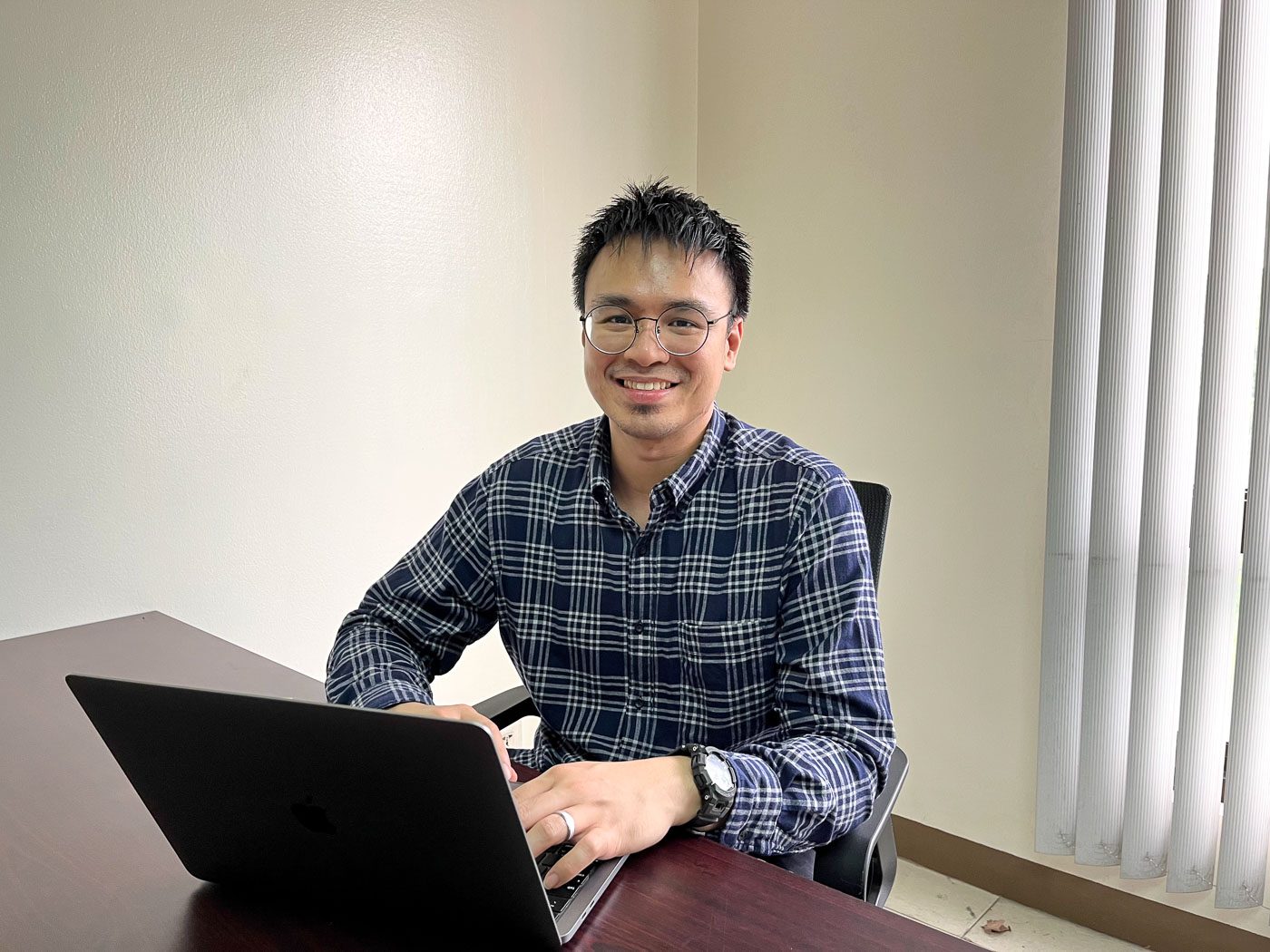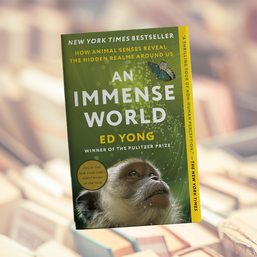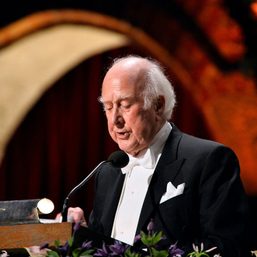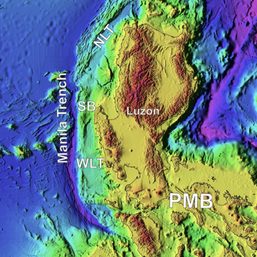SUMMARY
This is AI generated summarization, which may have errors. For context, always refer to the full article.

LAGUNA, Philippines – Jayson Cosme, a theoretical physicist and currently an associate professor at the University of the Philippines Diliman College of Science National Institute of Physics (UPD-CS NIP), recently led a team of six Germany-based researchers in pioneering a way to create time crystals and a dark state quantum system.
Their more recent dark state article was published in the prestigious journal Physical Review Letters in April 2023, with co-authors Jim Skulte, Phatthamon Kongkhambut, Sahana Rao, Ludwig Mathey, Hans Keßler, and Andreas Hemmerich.
With almost the same set of authors, they published their prior article in August 2022, which led to their surprising discovery of a dark state. This previous groundbreaking study created another type of time crystal, called continuous time crystal, for the first time in physics history.
Similar to the Big Bang Theory‘s theoretical physicist Sheldon Cooper, Cosme, along with his colleagues, created a theory or mathematical model and successfully verified it in their experimental design.
As a theorist, that’s something that excites you because we’re able to understand something at the fundamental level and that it works.
JAYSON COSME
Cosme clarified that what they found, the dark state, is different from dark matter, as the latter is mostly a theoretical form of matter and has not been detected yet. The dark state or dark quantum state, on the other hand, is the state of an atom or molecule that does not absorb or emit light (photons), hence “dark.” More importantly, the dark state is not just a theory as its existence has been proven and repeatedly created.
“It is closer to an invisibility cloak in Harry Potter,” he said, describing the dark state. “It’s practically invisible.”
Using the Bose-Einstein condensate (BEC) for their system, the study showed a unique way of creating a dark state using two key ingredients: the interaction between the atoms as facilitated by light via the laser beam, and the shaking of the laser itself.

He shared that different types of interactions create various states of matter, similar to how water molecules can become solid (ice), liquid (water), or gas (vapor), depending on how the molecules interact.
Their original setup was initially designed to create an incommensurate time crystal. By shaking the system harder, Cosme shared that they were surprised to see the transformation of the time crystal into something new and realized it was a dark state.
“We’re able to show that you can create a new state, which is a dark state, by combining periodic driving and interaction between the constituent particles that make up the Bose-Einstein condensate.”
While the study is fundamental research, the concept of the dark state can already be applied to quantum computing. Quantum computing is a multidisciplinary field that uses quantum mechanics to solve problems quicker than classical computers that exist nowadays.
While quantum computing has more possibilities for combinations of 1s and 0s, its state is not stable. For example, classical computers are more stable, which makes current devices like laptops and cameras function properly. Hence, its state of 1, for instance, will always remain 1, and so forth.
However, in a quantum bit, state 1, for instance, will at some point become 0.
With the dark state, a quantum bit will be more stable in creating a system that can solve more complex problems or perform faster functions than today’s supercomputers.
Cosme first started working with the team when he was working as a postdoctoral researcher and theorist in Hamburg, Germany, under Mathey, from 2017 to 2020. When he started working as an associate professor at UP Diliman in 2020, their collaboration continued.
As the principal investigator for the study, Cosme shared his idea with his close collaborator, Jim Skulte, to improve the mathematical model behind it and work on the experiment to prove their theory, along with their other colleagues from Hemmerich’s experimental group.
“Apart from the joy of discovery and doing the physics itself, also seeing that your fellow scientists, colleagues, [and] your peers appreciate the work that you have done and make use of your ideas, to me, that’s one of the reasons that I’m still here doing physics, still doing science,” he said. – Rappler.com
Add a comment
How does this make you feel?



![[OPINION] Remembering RSP, Norman and Jessie – geoscientists for the people](https://www.rappler.com/tachyon/2024/04/raymundo-punongbayan-April-29-2024.jpg?resize=257%2C257&crop_strategy=attention)





There are no comments yet. Add your comment to start the conversation.